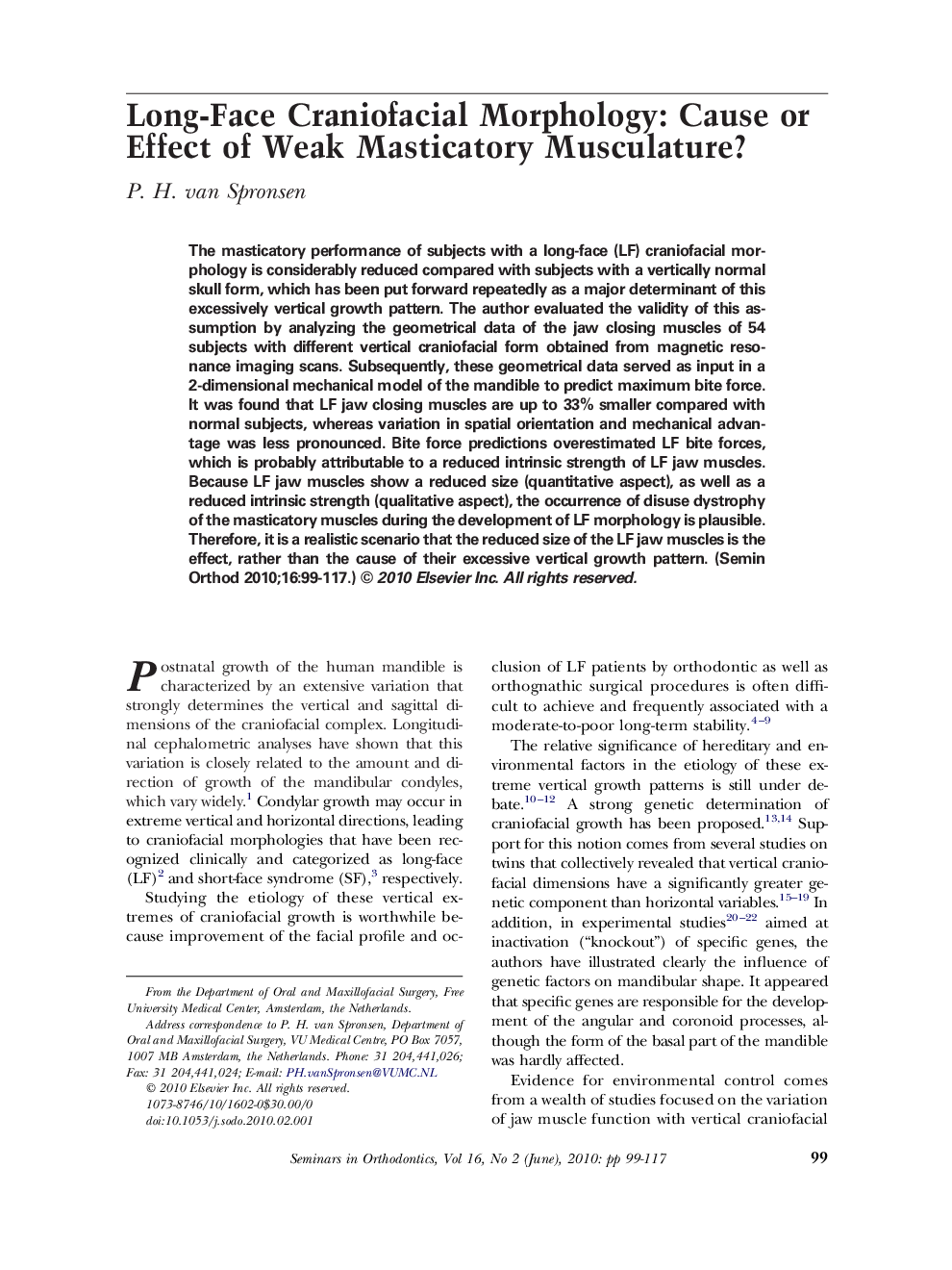| Article ID | Journal | Published Year | Pages | File Type |
|---|---|---|---|---|
| 3175550 | Seminars in Orthodontics | 2010 | 19 Pages |
The masticatory performance of subjects with a long-face (LF) craniofacial morphology is considerably reduced compared with subjects with a vertically normal skull form, which has been put forward repeatedly as a major determinant of this excessively vertical growth pattern. The author evaluated the validity of this assumption by analyzing the geometrical data of the jaw closing muscles of 54 subjects with different vertical craniofacial form obtained from magnetic resonance imaging scans. Subsequently, these geometrical data served as input in a 2-dimensional mechanical model of the mandible to predict maximum bite force. It was found that LF jaw closing muscles are up to 33% smaller compared with normal subjects, whereas variation in spatial orientation and mechanical advantage was less pronounced. Bite force predictions overestimated LF bite forces, which is probably attributable to a reduced intrinsic strength of LF jaw muscles. Because LF jaw muscles show a reduced size (quantitative aspect), as well as a reduced intrinsic strength (qualitative aspect), the occurrence of disuse dystrophy of the masticatory muscles during the development of LF morphology is plausible. Therefore, it is a realistic scenario that the reduced size of the LF jaw muscles is the effect, rather than the cause of their excessive vertical growth pattern.
